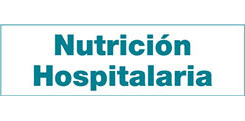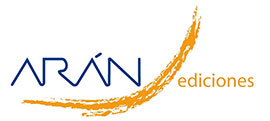Artículo Especial
Effects of maternal hydration status on the osmolality of maternal milk
María José Soto-méndez, Alejandra Maldonado, Lauren Burgunder, Laura Scieszka, Ángel Gil, Noel W. Solomons
 Número de descargas:
19264
Número de descargas:
19264
 Número de visitas:
8281
Número de visitas:
8281
 Citas:
0
Citas:
0
Compártelo:
Background: It has been demonstrated that human milk osmolality (Mosm) is regulated within an established range, typically 290 to 300 mOsm/kg, and appears to be resistant to effects of maternal dehydration, as refl ected by high urinary osmolality (Uosm).Objective: To determine the degree of association between Mosm and Uosm at a common point in time, as well as the reproducibility of both measures over a one-week interval of sampling.Methods: Mosm and Uosm were measured with a Vogel Löser 450 osmometer on samples of the respective biological fluids collected concurrently in 31 lactating women, with infants aged between 30 and 340 days. In the first 15 women recruited, collections were repeated 7 days after the initial ones.Results: The median Mosm for the 46 samples collected was 308 mOsm/kg with a range from 288 to 448 mOsm/kg. The corresponding values for Uosm were 598 mOsm/kg with a range from 93 to 1,678 mOsm/kg. The Spearman rank-order correlation coeffi cient for within-individual association of Mosm and Uosm was r = 0.214 (p = 0.153). The median Mosm for the 15 repeat-subjects was 309 mOsm/kg on both occasions, with a within-individual Spearman coeffi cient of r = 0.326 (p = 0.118). By contrast, for the Uosm, the within-subject association was much stronger, with r = 0.699 (p = 0.002).Conclusions: The osmometry technique proved to be a highly stable and reproducible measurement technique. Mosm and Uosm are not significantly associated at a point in time. Intra-subject Mosm varies more across time than intra-subject Uosm.
Palabras Clave: Breastfeeding. Milk osmolality. Urine osmolality. Hydration status. Guatemala
Artículos Relacionados:
Trabajo Original: Doble carga de malnutrición en escolares urbanos y rurales de guatemala
José Joaquín Muros , Mercedes Briones Urbano , Guillermo Rodríguez , Paula R. Bouzas , Rafael Giménez , Carmen Cabrera-vique
Artículo Especial: Impact of physical activity and sedentarism on hydration status and liquid intake in spanish older adults. the physmed study
Raquel Aparicio-Ugarriza , Raquel Luzardo-socorro , Gonzalo Palacios , María del Mar Bibiloni , Alicia Julibert , Josep Antoni Tur , Marcela González-gross
Artículo Especial: Urinary hydration biomarkers and water sources in free-living elderly
Alexandra Gonçalves , Joana Silva , Pedro Moreira , Patrícia Padrao
Artículo Especial: Urinary hydration biomarkers and dietary intake in children
Patrícia Padrao , Mafalda Neto , Ana Catarina Oliveira , André Moreira , Pedro Moreira
Artículo Especial: Dietary intake according to hydration status in 9-10 year-old soccer players
Lusmar Rodriguez , Ana Raquel Azevedp , André Seabra , Patrícia Padrao , Pedro Moreira
Trabajo Original: Validated questionnaire to assess the hydration status in a healthy adult Spanish population: a cross sectional study
Ana Isabel Laja García , María de Lourdes Samaniego Vaesken , Teresa Partearroyo Cediel , Gregorio Varela Moreiras
Trabajo Original: Composición y valor nutritivo de almuerzos y desayunos comprados fuera del hogar en zonas urbanas de Guatemala
Trabajo Original: Hydration status after exercise affect resting metabolic rate and heart rate variability
Artículos más populares
Revisión: Inteligencia artificial generativa ChatGPT en nutrición clínica: avances y desafíos
ChatGPT y otras herramientas de inteligencia artif...
Revisión: Suplementación con micronutrientes y sus beneficios: ¿por qué y cuándo?
Introducción: los micronutrientes participan en la...
-
Licencia creative commons: Open Access bajo la licencia Creative Commons 4.0 CC BY-NC-SA
https://creativecommons.org/licenses/by-nc-sa/4.0/legalcode




